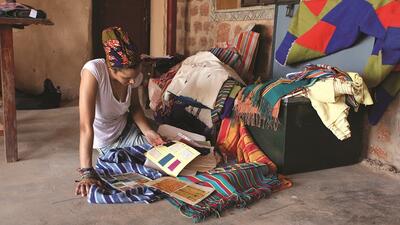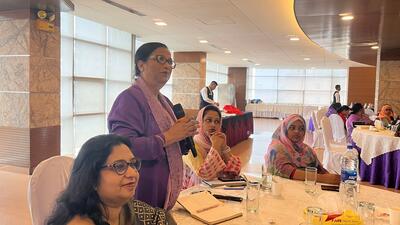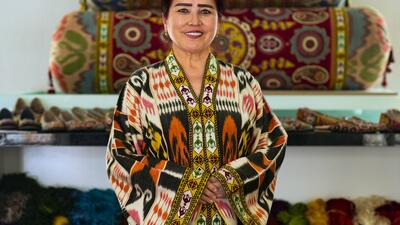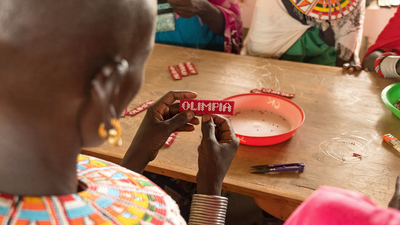Gender and trade: A fresh look at the evidence
The relationship between trade and gender has been hotly debated. Some say that globalization has excluded or impoverished women, causing disproportionate job losses due to the influx of foreign goods into domestic markets. Others argue that increased trade leads to greater gender equality by creating new jobs and economic growth.
In fact, neither side in the debate is totally right, and a nuanced view is needed. Trade integration has translated into more jobs and stronger connections to markets for many women. Indeed, as shown by the World Bank’s 2012 World Development Report (WDR 2012), increases in international trade have tended to increase women’s employment, not a feature that typifies many development processes. And access to these jobs can empower women in important ways.
Yet globalization alone cannot eliminate gender gaps, and there is equally clear evidence that significant gaps persist, and can even worsen, in the face of trade and globalization. Complementary policies and public actions are needed to ensure that globalization works as a positive force for gender equality. Such policies include those that reduce disparities in education and skills, access to capital and time. Likewise, trade-related interventions should consider existing constraints, such as differences in education and access to finance.
The benefits of trade openness
Openness of trade has increased job opportunities for women in many countries. This is especially the case for manufacturing and service exports characterized by labour-intensive production. For example, in the Republic of Korea, the share of women employed in manufacturing grew from 6% in 1970 to around 30% by the early 1990s, while in Delhi and Mumbai, call centres now employ more than 1 million people, mostly women (WDR 2012).
The value of trade openness goes beyond mere job creation, generating benefits such as greater autonomy for women gained through working outside the home in wage-paying jobs, and benefits for future generations.
For example, increased working opportunities can translate into increased choice and decision-making autonomy for a woman, which is a critical and intrinsic dimension of development. In Bangladesh, for example, Pratima Paul-Majumder and Anwara Begum (2000) reported that female garment workers have higher self-esteem than female workers in non-export industries, and that some of them have undertaken employment even against the wishes of their family members. The same study reports that female garment workers marry and give birth at a later age.
Recent studies also suggest that improved job opportunities created by exports can have positive effects for future generations. Heath and Mobarak (2011) observe that the arrival of garment jobs in Bangladesh increased the probability of a five-year-old girl attending school. This could be due to parental desire to prepare their daughter for work that requires numeracy and literacy, or simply because they have additional income.
Yet gains in employment do not always translate into improved wage equality. For example, in the Republic of Korea, even in the presence of high labour demand, the women-men wage gap narrowed only marginally between 1975 and 1990 (Seguino, 1997).
Women appear to be more subject to job insecurity. In the case of Turkey, for example, Ozler (2007) finds that gross job reallocation is larger for women than men, suggesting that women are subject to a more volatile employment status. Similarly, Levinshon (1999) analysing the impact of trade liberalization in Chile, finds that gross job reallocation rates are often over twice as high for women than for men.
A more systemic issue is that existing patterns of employment segregation by gender can emerge in new industries and occupations as firms move up the value chain. In East Asia, for example, as countries have moved to more skill-intensive manufacturing, there has been a defeminization of the manufacturing workforce. For example, between 1980 and 2008, women’s share of manufacturing employment declined from 50% to 37% in Chinese Taipei and 39% to 32% in the Republic of Korea (Berik, 2008; ILO, 2011).
Gender gaps, therefore, can remain entrenched in the face of trade liberalization and can even intensify. In agriculture, for example, women’s weaker land property rights and limited access to productive inputs can constrain their capacity to benefit from trade openness in agriculture.
Similarly, differences in human capital can limit women’s access to new opportunities. While gender gaps in schooling have largely closed, streaming into different fields of study (associated with different career opportunities) remains a major issue. For example, in tertiary education, women are more likely to choose a field related to education and health and less likely to choose science, engineering, or construction (WDR 2012). Moreover, among severely disadvantaged populations, such as in remote rural areas, girls tend to drop out of school more often than boys. Finally, firms may underinvest in training their female employees, reflecting a view that men are less likely to leave paid work to fulfill domestic responsibilities (Seguino and Growth 2006).
Complementary policies and actions are key to addressing gaps
To counteract persistent gender inequities, proactive policies are needed and there are some promising cases to highlight.
The WDR 2012 estimates that eliminating barriers that prevent women from working in certain occupations and sectors would reduce the productivity gap between male and female workers by one third to one half and increase output per worker by 3% to 25% across a range of countries. Policies that aim at closing the gender gap in skills and physical assets are important generally, but will also increase the capacity of women to gain from trade.
Trade-related interventions should consider how gender-focused policies could create an economic multiplier effect. For example, in Uganda, cotton is a major export, characterized by smallholder production. Interviews with almost 500 cotton growers in four cotton-growing regions revealed a large productivity gap between male and female cotton growers (Baffes, 2009, 2010). This points to the potential gains that could be made by closing gender gaps in agriculture. Similarly, interventions that reduce gender discrimination and improve working conditions in the workplace can lead to increases in competitiveness. Although research in this field is limited, there are some positive examples. For example, the International Finance Corporation and International Labour Organization’s Better Work Programme in the Viet Nam garment sector, which is highly
woman-intensive, has promoted labour standard compliance including the election of worker representatives. This has facilitated problem solving, leading to more effective factory-level decisions, which has contributed making factories more competitive (IFC, 2012).
Globalization can create new opportunities for women, but gaps seem to persist in the absence of complementary policies and actions. While gender-disaggregated analysis to inform trade-related programmes is extremely important, development practitioners and policymakers also need to have more information on the impact of trade-related interventions on men and women, fuelling productive, fact-based policy dialogue and action.
Note: The views expressed in this article are solely those of the authors and do not reflect those of the World Bank or its Executive Directors. The authors are grateful to Ian Gillson, Kayoko Shibata Medli, and Sarah Twigg for their invaluable comments.
Integrating gender considerations in value-chain analysis
In the late 2000s, Afghanistan was the world’s seventh largest exporter of raisins and the eleventh largest exporter of almonds (at US$ 150 million and US$ 110 million respectively). Value-chain analysis of these products reveals that women in rural areas engage in harvesting and basic processing at their home orchards or compounds. Men provide market linkages for their households, either by travelling to the local market to buy supplies or by selling produce.
Women’s mobility and access to services was found to be constrained in several ways: they are not allowed to interact with men outside the family, to work outside the home without permission from a male family member, to travel outside their village, or to own land. These practices reduce their mobility and access to services, including input supplies and market linkages.
Opportunities could be created for women producers through: women group mobilization, the development of women’s extension services, training on harvesting, handling and quality control, the use of information technology for information and marketing, and the provision of innovation grants for women.
Source: World Bank, 2011. “Understanding gender in agriculture value chains: the case of grapes/raisins, almonds, and saffron in Afghanistan”.
Facilitating cross-border trade by women
While it is difficult to establish a precise number, surveys estimate that women constitute a large share of informal cross-border trade in southern Africa. More than 70% of cross-border traders between Mozambique and South Africa are women.
A recent survey in four key border crossings in the Great Lakes region between the Democratic Republic of Congo and Burundi, Rwanda and Uganda found that the majority of traders are young women and experienced traders. These traders face serious risks and losses with each border crossing, including threats and sexual harassment, bribes, fines, confiscation of goods, verbal abuse and insult. Additionally the study finds that 95% of traders want to invest in their business but are constrained by the current border environment and lack of access to finance. Several public actions could improve the lives of these cross-border traders, including increasing professionalism and gender awareness of officials, and improving facilities at border crossings to minimize the risks to safety and security.
Sources: Brenton et al, 2011. “Risky Business: Poor Women Cross-Border Traders in the Great Lakes Region of Africa.” Africa Trade Policy Note 11, World Bank, Washington, D.C.
Lesser and Moisé-Leeman. 2009. “Informal Cross-Border Trade and Trade Facilitation Reform in Sub-Saharan Africa.” Trade Policy Working Paper 86, Organisation for Economic Co-operation and Development, Paris.










